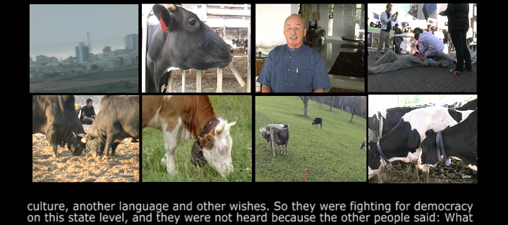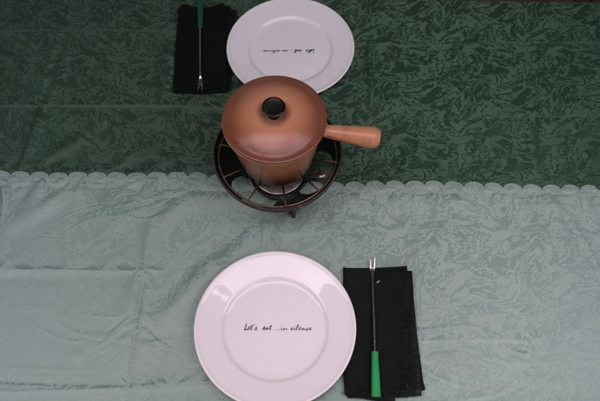ITS-Z1, Ritopek, Belgrade
16 June - 21 July 2012. Opening on 16 June, 18h.
http://its-z1.org/ | www.code-flow.net/neighbours
Lia Lapithi
Lia Lapithi was born in 1963 in Cyprus, lives and works in Nicosia. Studied Art and Environmental Design at the University of California Santa Cruz (USA), followed by a Master of Philosophy at Lancaster University (UK). In 1991 she obtained a Masters degree in Architecture at Kent Institute of Art and Design in Canterbury, UK, and in 1994, a Master in Art Education from the University of Wales. At first influenced by the relationship to medicine/medical art, her artistic work later evolved around environmental and political issues, especially on the Cyprus issue, and the most sensitive forms of the tense political situation of the divided island. Her recent works are on art-food related events, including interactive social performances.
Lia Lapithi's work has been presented in exhibitions and international festivals including the Grand Palais in Paris, Dumbo Arts Center, New York, Musée Bozart, Brussels. Her works are included in the Cypriot National Collection of Contemporary Art in Nicosia, Cyprus, in the Museum of Applied Arts (MAK) in Vienna, and Centre Pompidou, Paris.
The Grass is Greener on the Other Side
Multi channel video installation, interactive food art performance, fondue, 2-tone tablecloth, 2012
This project is a work that emerged under the general title Enemies in Collaboration, which began as a collaborative thinking process between two friends, artist Lia Lapithi Shukuroglou and curator Işın Önol, from Cyprus and Turkey. Their respective countries of origin are reflected in the general title as per above.
The prerequisite was to make a project that did not touch directly onto the political Cyprus-Turkish issue, something that would be expected from the viewer, but to look outside the obvious. The result of this collaboration can be seen in two parts.
The first part is a multi-channel video installation of cows from varying countries: Cyprus, Israel, Croatia, Oman, Switzerland, Germany and Qatar. For each cow channel, its “country of origin” is determined either by background sound or by a characteristic landscape.
Among the cows, a Swiss lawyer, René Muttenzer, gives a historical account about “the Jura problem” (an unexpected “problem” area, Switzerland, which most people view as a country whose “grass is always green/er”), and a definition of Swiss democracy. The viewer can hardly hear René among the cacophony created by the cow videos.
In front of the videos, a dinner table is set, with a two-tone green tablecloth, a set of two plates, fondue forks and a small fondue pot that sits in the centre of the two green-shades that divide the table-cloth. The two “enemy friends” are asked to sit together and eat in silence, dipping their forks in the same pot. They share this meal in front of an audience, while the videos of René and the cows in the background keep looping the same story, over and over again…

Lia Lapithi,The Grass is Greener on the Other Side, 2012

Lia Lapithi,The Grass is Greener on the Other Side, 2012